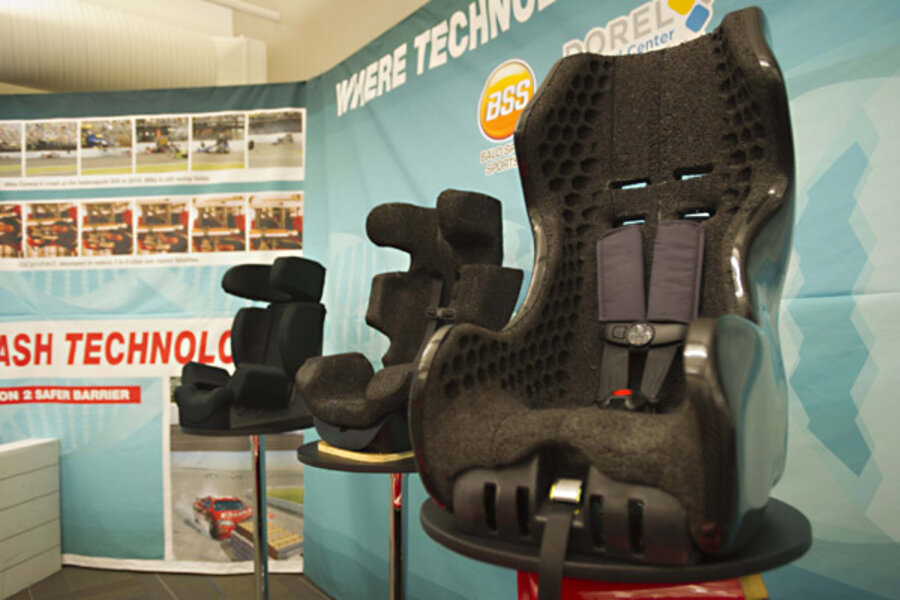What's new in the world of car seats?
Loading...
Parents, especially new parents, want to ensure the safety of their child by taking all the right precautions – including buying and installing the right type of car safety seat. While new products arrive on the scene with some regularity, not much is ever discussed about the changes in car seats, specifically in terms of trends.
Such trends are dictated by increasing safety regulations, by consumer demand, and to appeal to certain market segments. We spoke with Angela Osterhuber, the director of the Pennsylvania Traffic Injury Prevention Project, about some of the trends in child car safety seats that are happening now.
Dual angle indicators
“As more car seats are being designed with a minimum weight of four pounds and also being designed for use to a higher weight rear facing, some car seat manufacturers are starting to add dual-angle indicators based on the child’s weight,” said Osterhuber. She cited several examples, including Combi, Cybex, and Dorel.
Open airway pillows and inserts
Osterhuber also noted that manufacturers are now adding other items for helping smaller newborns to maintain an open airway. Car seat manufacturers with products that fit in this category include:
- Britax-Infant Positioning Insert
- Graco-body pillows
- Cybex-Newborn Inlay and Insert
Belt-tensioning plate
Ever hear of a belt-tensioning plate? Cybex Aton has one that secures the car seat base. “The unusual thing about this is that to secure the base, the parent or caregiver only needs to remove slack and the tensioning plate tightens the belt,” Osterhuber said. “All other car seats provide the instruction to tighten the belt. On this seat, if you tighten the belt, you cannot close the belt-tensioning plate.”
Rebound control for rear-facing car seats
There are many different designs for rebound control on rear-facing car seats, including tethers secured to the floor, rebound bar, carrier handle in a position angled toward the seat back, and the recline adjustment becomes the rebound bar for rear facing and then angles the car seat in an upright position for forward facing.
Force reduction
With REACT – Rapid Energy Absorbing Crumple Technology -- from car seat manufacturer Clek, during a collision, the force being transmitted to the child is reduced by 40 percent.
Britax - SafeCell Technology
Britax has been in the news recently to publicize its products with “safety you can see.” A key part of the Britax safety story is SafeCell Technology. “This is another interesting trend,” commented Osterhuber. “SafeCell Technology is located in the base of the seat to lower the child’s center of gravity to reduce head excursion.”
FMVSS 213
Finally, Osterhuber mentioned that changes to the Federal Motor Vehicle Safety Standard 213 will go into effect in 2014. “This is not a change in car seats, but the revisions will change car seat testing and possibly result in new car seat designs,” Osterhuber said.
Check out the new child restraint guidelines issued by the National Highway Traffic Safety Administration (NHTSA) as well as information on choosing the right car seat and more on the new NHTSA-created website, Parents Central.
Need help with car seat installation? Parents Central has several instructional videos that show step-by-step installation – the proper way.







